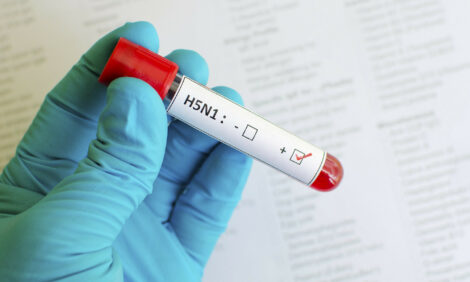



How to Replace, Reduce and Refine Antibiotics On Farm
ANALYSIS – Pressure is mounting on the animal health industry to reduce, replace and refine the usage of certain antimicrobial medicines, writes Michael Priestley.This is in response to growing pressure from human health leaders who have prioritised drugs according to their importance to human health – known in the industry as the “criticals list”.
For more 'judicious use' of these critical drugs in animal agriculture, combinations of control measures are required for managing livestock to prevent infection, allowing for effective antimicrobial stewardship.
In practice, this means reducing the disease challenge with measures such as: improving broiler farm biosecurity, vaccinating animals, reviewing milking parlour hygiene or diversifying the genetics of pigs and cattle to be more resistant to disease.
What sustainability and animal welfare consultants at the Food Animal Initiative (FAI) want to achieve is reduced dependence on antibiotics within the livestock sector through sustainable approaches.
They say this will bring ethical, environmental and economic benefits.
Based on their commercial farm in Oxford, FAI has helped steer the UK farming industry towards collaborative discussion across the supply chain.
Following the Ceva Roundtable on Antimicrobial Stewardship hosted by FAI in 2014, FAI couched the antimicrobial sustainability within the 3Rs framework of reduce, replace and refine.
But What Do the 3Rs Mean?
Laura Higham is a veterinary surgeon at FAI who explains that the “3Rs” is a responsible, pragmatic approach to antibiotic use in veterinary medicine and animal agriculture.
“The ‘3Rs’ framework is about reducing unnecessary antibiotic treatments, identifying and using viable alternatives to antibiotics, and ensuring that we are giving the right dosages of the right drugs to the right animals at the right time," says Laura. "Prevention is better than cure, and by preventing disease we can reduce antibiotics usage.
“We want to see the industry shift focus towards sustainable livestock management, and disease prevention."
FAI applies a hierarchy of interventions to disease management. It prioritises preventing disease before it can happen. Strategic treatments then follow, with emergency treatments the last resort, which may include use of antimicrobial drugs.
An example of strategic treatments would be monitoring somatic cell counts in milk to indicate mastitis levels on a dairy farm.
Mastitis, a term for inflammation of the mammary gland, can be a production and welfare challenge in dairy farming and is caused by infectious agents entering the cows' udders via the teats. High somatic cell counts can alert a farmer to an infection challenge, informing management decisions which may involve further diagnostic testing, treating with drugs or addressing milking parlour hygiene.
Catching an early or subclinical infection in one cow can prevent serious clinical mastitis, and may reduce infection risk in other members of the herd.
Ways to Replace, Reduce and Refine Antibiotic Use in Livestock Production
Replace
- Optimise Husbandry Practices - Reduce stress on livestock, Improve environment, Housing, Nutrition
- Vaccination - establishing immunity against specific diseases
- Phage therapy, bacteriocins, predatory bacteria – novel approaches
- Genetics – disease resistant breeds
Reduce
- Measurements of antibiotic use in animals, allowing the industry to benchmark progress.
- Reduce public expectations of receiving antibiotics from practitioners
Refine
- Ensure responsible use of critically important antimicrobials to last resort treatments and diagnosed susceptible infections
- Farmer training to ensure the correct application of antibiotics on-farm
- Use of diagnostic tests to ensure ‘right drug for the bug’
Stress, Genetics and Management
Animals are more susceptible to disease when stressed, explains Laura. For this reason, animal welfare can play a big role in reducing antimicrobial usage.
“An example of this is the respiratory condition ‘shipping fever’ in cattle,” she adds.
Ever present bacteria in the respiratory tract cause the disease when animals come under stress. Shipping fever is linked with Bovine Respiratory Disease, the most costly disease to the US cattle industry.
US Cattle can be trucked thousands of miles to feedlots, frequently resulting in immune compromise and disease caused by Pasteurella bacteria.
In addition, Laura rates highly the role of genetics in creating sustainable solutions to livestock disease.
For example, disease resistant cattle such as the trypano-tolerant breeds of West Africa are suited to tough tropical environments where Trypanosmoniasis is a severe production constraint.
Top on FAI’s list is working with farmers to communicate the importance of holistic solutions to manage disease risk.
One example of recent work is the five point plan for lameness in sheep. Through culling persistently lame sheep, vaccinating flocks, avoiding infection, offering timely, targeted treatment and quarantining incoming animals, FAI has shown a marked reduction in lameness cases on a number of UK sheep operations with subsequent effects on antibiotics dependence.








